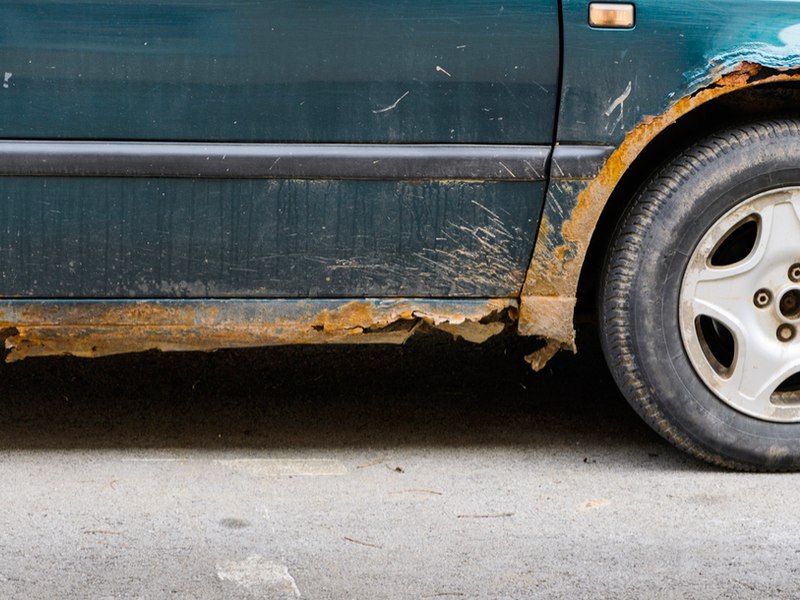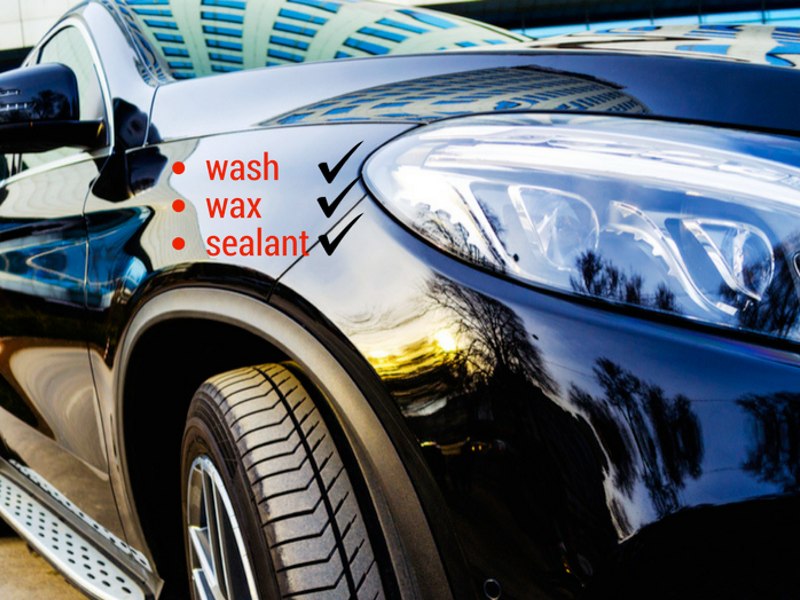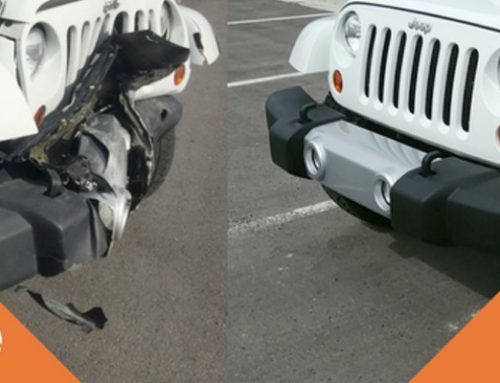Summer and early fall have one thing in common: rain. Maybe not quite so much in the Beehive state, but you go where your car takes you, and that can be all over the country in the summer and fall. Have you ever wondered how rain affects your cars’s body? Here’s what you should know, and what you should do.

Rain Water
Rain water isn’t inherently hard on your vehicle, though elements left on the car after water has evaporated can be worrisome. Dirt, dust, and other small particles can be left on the vehicle and give your car less shine over time. However, you shouldn’t generally worry about water eating away at your paint. With that being said, what about while you’re driving?
There are various methods to keeping safe while driving in the rain. Though it’s definitely not as hard as driving in the snow, you should still be cautious about driving on slick roads. Try these out the next time you are driving in a heavy downpour:
- Slow down – by all means do not drive so slow that you’re disrupting traffic flow, but you can drive anywhere between 5 and 10 miles per hour slower than the speed limit, which will help you avoid hydroplaning.
- Sit forward and pay attention – it’s crucial that you are on the lookout for potential hazards during heavy rain.
- Use your lights – make sure you can see where you’re going, and that other drivers can see you coming.
- Avoid highways – if you can. We know this isn’t always possible, but by avoiding these fast-paced roads you can greatly reduce your risk for incidents.
- Check your tires – you should regularly check the tread on your tires for maximum grip on the road. Depending on what kind of drive your car has, you should also regularly rotate your tires. Ask a tire expert if and when you should rotate your tires.
Follow these guidelines and you should have a safe driving experience this rainy season!
Acid Rain
Acid rain is defined as “rainfall made sufficiently acidic by atmospheric pollution.” Can it harm your vehicle, internal parts, and fluids? Rain that contains more elements and pollutants than normal water can cause paint damage if left untreated.
Where does acidic rain occur? Well, in America, it can happen in a lot of places. Water.usgs says:
The areas of greatest acidity (lowest pH values) are located in the Northeastern United States. This pattern of high acidity is caused by the large number of cities, the dense population, and the concentration of power and industrial plants in the Northeast. In addition, the prevailing wind direction brings storms and pollution to the Northeast from the Midwest, and dust from the soil and rocks in the Northeastern United States is less likely to neutralize acidity in the rain.
So what’s the best way to deal with acid rain if you do happen to need to drive in those areas? First, wash your car. There’s really not a way to tell if your car has been subjected to acidic rain, so wash your car regularly to avoid paint damage. Generally, acid rain won’t get inside your vehicle, so a regular wash should keep you covered!

Maintain and Protect Your Car
Your best protection is to maintain your car with vigilance. A car wash following a few days of heavy rain is always a good idea. More is better. In addition, a good wax job and protective paint application will greatly reduce the possibility of damage. Hopefully you won’t have to deal with rain-related car damage, but by following these suggestions you shouldn’t have to!
Unique Auto body works hard to get your vehicle back to its pre-accident condition, or better. With three locations in Utah, we’re aren’t far away and are happy to answer any questions you may have. We even work with all insurance agencies so you can work with who you feel comfortable. Not convinced? See our before and after photos. As always, please give us a call if you have questions, or would like to schedule a time to bring your vehicle in!




